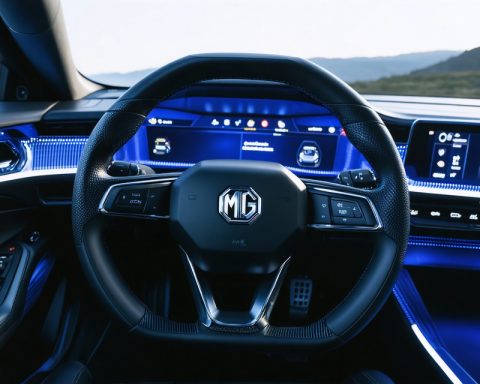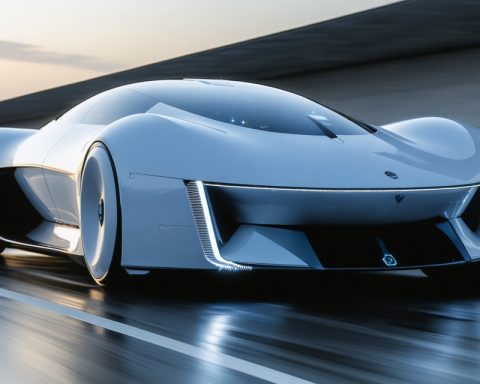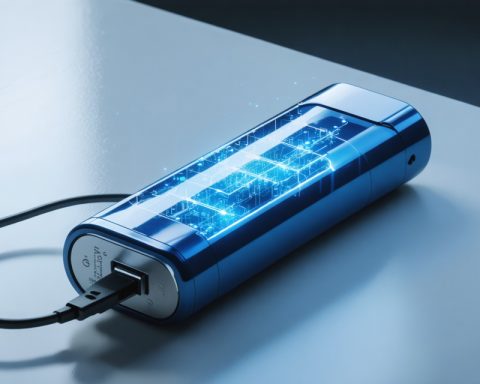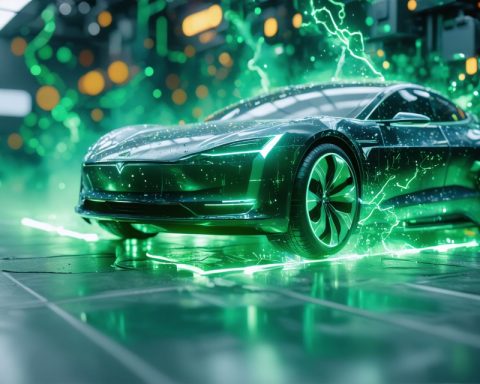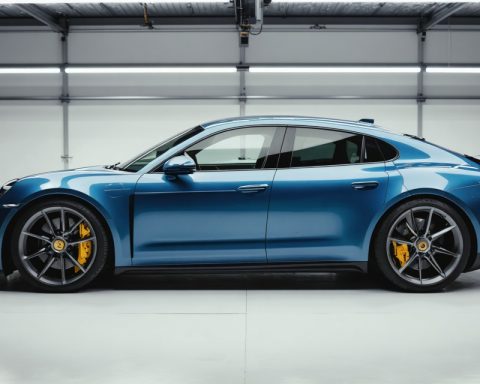- Electric vehicles (EVs) are transforming suburban life with their eco-friendly promise and practicality, leading to quieter, cleaner neighborhoods.
- Suburban infrastructure is evolving, with charging stations at local stores and schools, integrating EVs seamlessly into daily routines.
- Reduced emissions from EVs improve air quality, offering healthier environments for communities and reducing climate change impacts.
- Cost savings on fuel and maintenance make EVs an attractive, affordable option for families, freeing up resources for other needs.
- Technological advancements in EVs provide a smooth, exhilarating driving experience, enhancing journeys with modern, quiet, and eco-friendly features.
- EVs exemplify a lifestyle shift towards sustainability, inviting suburbanites to participate in a green revolution for a brighter future.
The quiet streets of suburbia, often dominated by the dull hum of gasoline engines, are witnessing a silent transformation. Electric vehicles (EVs) are not just innovations of the urban elite; they are redefining life for everyday families across America. One driveway at a time, electric cars rewrite the suburban narrative with their eco-friendly promise and practicality.
Imagine a silent morning as the sun casts a golden hue on the tree-lined avenues. Instead of the usual start-stop growl of engines, you hear… nothing. Your neighbor’s shiny new electric vehicle glides silently past, a testament to the future on four wheels. This shift is not just about a new kind of vehicle; it’s about redefining sustainability and convenience.
Traditionally, charging stations weren’t considered a part of suburban life, but times have changed. Picture sleek charging points nestled subtly at local stores, schools, and community centers. These hubs turn routine errands or school drop-offs into opportunities to top up on electric power, seamlessly integrating eco-friendly habits into daily routines. A quick visit to the grocery store now doubles as a battery boost, keeping the flow of life uninterrupted.
Why is this shift so critical? Reduced emissions play a vital role in curbing climate change, a global issue with local solutions. By embracing electric vehicles, suburban families contribute to cleaner air, benefitting communities with less pollution and healthier environments. Imagine children playing outside, inhaling fresher air—a vision made possible by the reduction in tailpipe emissions.
Moreover, electric vehicles offer surprising affordability. The cost savings from lower fuel expenses and reduced maintenance quickly add up, making them an attractive option for budget-conscious families. Picture this: instead of frequent stops at gas stations, families enjoy more savings, which can be redirected to other essentials or savings for the future.
The technological advancements in EVs lead to an exhilarating driving experience—smooth acceleration, quieter rides, and state-of-the-art technology that makes every journey not just a trip, but an adventure. Parents setting off on weekend getaways no longer need to worry about their carbon footprint or rising fuel costs.
As the sun sets and the streetlights flicker on, these electric vehicles, parked silently in the driveways, symbolize a tangible shift towards a sustainable future. They are not a disruption but a harmonious evolution, syncing perfectly with the rhythm of suburban life.
The takeaway is clear: Electric vehicles represent more than a change in transportation; they embody an improved lifestyle choice that benefits both individuals and the planet. Embracing this electrifying future is achievable now, inviting every suburbanite to be a part of this green revolution. The next time you hear rustling leaves instead of roaring engines, know that a better future is quietly underway.
5 Reasons Why Suburban America Is Quietly Embracing Electric Vehicles
Electric Vehicles: A Suburban Revolution Unfolding
The transformation taking place in the suburban landscape is both exciting and significant. While electric vehicles (EVs) have often been associated with urban innovation, they are swiftly becoming a staple in suburban life. This change is reshaping lifestyle choices, propelling families toward more sustainable living, and offering a range of practical benefits.
1. Convenience of Charging Infrastructure
While the article touched on charging stations becoming part of suburban life, it didn’t fully explore the burgeoning infrastructure supporting this shift. As demand for EVs grows, so too does the expansion of home charging solutions. Owners can install Level 2 charging stations in their garages, which provide faster charging times, often around 3-7 hours for a full charge, depending on the vehicle and charger specifications. Additionally, companies like Tesla and ChargePoint have been pivotal in expanding public charging networks across suburban areas, ensuring access is no longer a concern. Local municipalities and businesses are increasingly installing charging stations as part of their initiatives to promote green energy.
2. Financial Considerations
It’s also crucial to discuss the financial advantages of EV ownership in more detail. The federal government offers tax credits for purchasing electric vehicles—currently up to $7,500, depending on the model and battery capacity. Furthermore, many states provide additional incentives, such as rebates and tax credits, making EVs financially appealing. Over time, owners also benefit from the lower cost of electricity compared to gasoline, fewer maintenance requirements due to fewer moving parts, and potentially lower insurance premiums. According to Consumer Reports, EV owners can save between $6,000 to $10,000 in fuel and maintenance costs over the lifetime of the vehicle compared to gasoline-powered cars.
3. Record-Breaking Performance and Features
EVs aren’t just about reducing emissions; they’re about offering a thrilling driving experience. Many electric vehicles, like Tesla’s Model S Plaid, boast the ability to accelerate from 0 to 60 mph in under two seconds. Beyond speed, these vehicles come equipped with cutting-edge technology, including advanced safety features, autonomous driving capabilities, and integrated information and entertainment systems. The low center of gravity, resulting from battery placement, improves vehicle stability and handling, making suburban drives feel smoother and safer.
4. Environmental and Health Benefits
Suburban areas often face issues like smog and poor air quality due to traffic congestion. Transitioning to electric vehicles significantly reduces local air pollutants, contributing to healthier communities. The American Lung Association has highlighted the health benefits of adopting clean energy transportation, projecting reductions in respiratory issues like asthma.
5. Industry Trends and Predictions
The future of transportation is electric, with analysts predicting significant growth in EV sales. According to BloombergNEF, electric vehicles could make up nearly 58% of new car sales globally by 2040. Automakers are ramping up production lines to meet this demand, promising a wider variety of models to meet different consumer needs.
Actionable Tips and Recommendations
– Install a Home Charging Station: Consider investing in a Level 2 home charger for convenience and efficiency.
– Research Incentives: Look into federal and state incentives that can significantly reduce the cost of an electric vehicle purchase.
– Explore Hybrid Models: If you’re hesitant to go all-electric, hybrid models can offer a transition with some benefits of electric vehicles.
– Stay Informed: Keep up with the latest EV models and industry news to make informed purchasing decisions.
Suburbia isn’t just adopting electric vehicles—they’re experiencing a paradigm shift. As infrastructure, affordability, and technology converge, suburbanites find themselves driving not just cars but the future of mobility. For more information about electric vehicles and to stay updated on the latest trends, visit Tesla, a leader in the EV revolution.

